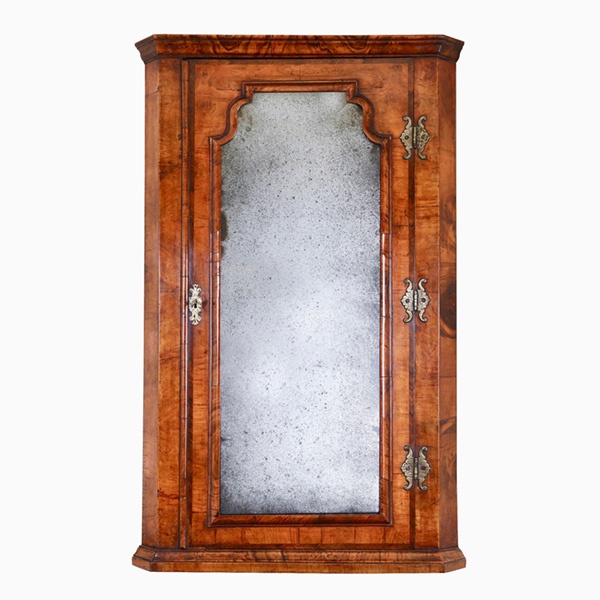William and Mary Seaweed Marquetry Strong Box
Firmly Attributed to Gerrit Jensen
Sold
Request Information
Follow Us
William and Mary Seaweed Marquetry Strong Box Firmly Attributed to Gerrit Jensen
A 17th century William and Mary seaweed or arabesque marquetry strong box, with firm attribution to the royal cabinetmaker, Gerrit Jensen, circa 1680-1700, England.
This is one of only three 17th century examples of strong box, identified to have been produced in seaweed or arabesque marquetry, one of which is in the Duke of Devonshire Collection at Chatsworth House and the other at Ham House. Jensen (active 1680-d.1715) was of Dutch or Flemish origin. He was known to be working in London from a premises in St. Martin’s Lane by 1680 and was the only cabinetmaker working in England during this period, known to have used metal inlays and elaborate ‘seaweed’ or ‘arabesque’ marquetry.
Among other pieces supplied to important houses and royal palaces such as Whitehall, St James, Somerset House, Kensington, Windsor Castle, Hampton Court and the royal residence at Newmarket, he also supplied a strongbox to the 1st Duke of Richmond. His furniture reflects the fashionable French court styles of Pierre Golle, André Charles Boulle and Daniel Marot. He was appointed as royal cabinetmaker in 1689 – 1710 and supplied both king William III & Queen Mary II (1689-1702) and Queen Anne (1702 – 1714).
Condition
Fabulous original condition including green silk velvet!
Dimensions
H 9.06 in. x W 13.78 in. x D 10.24 in.
H 23 cm x W 35 cm x D 26 cm
PREVIOUSLY SOLD
No Results Found
The page you requested could not be found. Try refining your search, or use the navigation above to locate the post.
No Results Found
The page you requested could not be found. Try refining your search, or use the navigation above to locate the post.
YOU MAY ALSO LIKE

Pair of 18th-Century English Rococo Gilt Bronze Andirons or Firedogs
An exceptional pair of 18th century English Rococo gilt bronze andirons or fire dogs.
The bold shape of these andirons relate to designs of Thomas Johnson (1714–1778), one of London’s pioneers of the ‘Modern’ or French style, later known as Rococo.

Queen Anne Walnut Corner Cupboard with Bevelled Mirror Plate
A truly remarkable find in original condition. To the door a shaped soft bevelled mirror plate is framed by a cross-grain molding of typical queen Anne design which is further cross-banded, feather-banded and edged to the opening with a single de-molding.

Pair of 18th-Century English Rococo Gilt Bronze Andirons or Firedogs
An exceptional pair of 18th century English Rococo gilt bronze andirons or fire dogs.
The bold shape of these andirons relate to designs of Thomas Johnson (1714–1778), one of London’s pioneers of the ‘Modern’ or French style, later known as Rococo.

Queen Anne Walnut Corner Cupboard with Bevelled Mirror Plate
A truly remarkable find in original condition. To the door a shaped soft bevelled mirror plate is framed by a cross-grain molding of typical queen Anne design which is further cross-banded, feather-banded and edged to the opening with a single de-molding.











